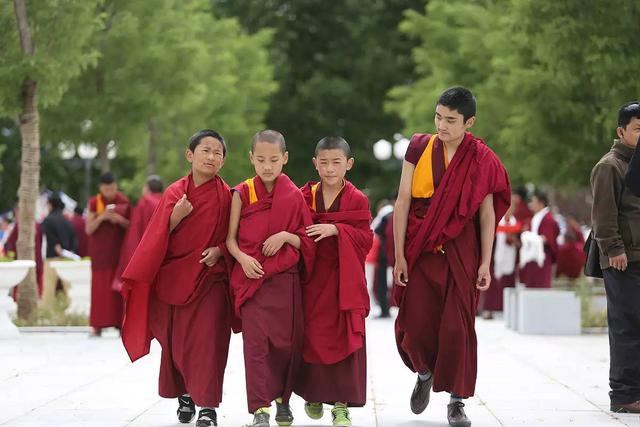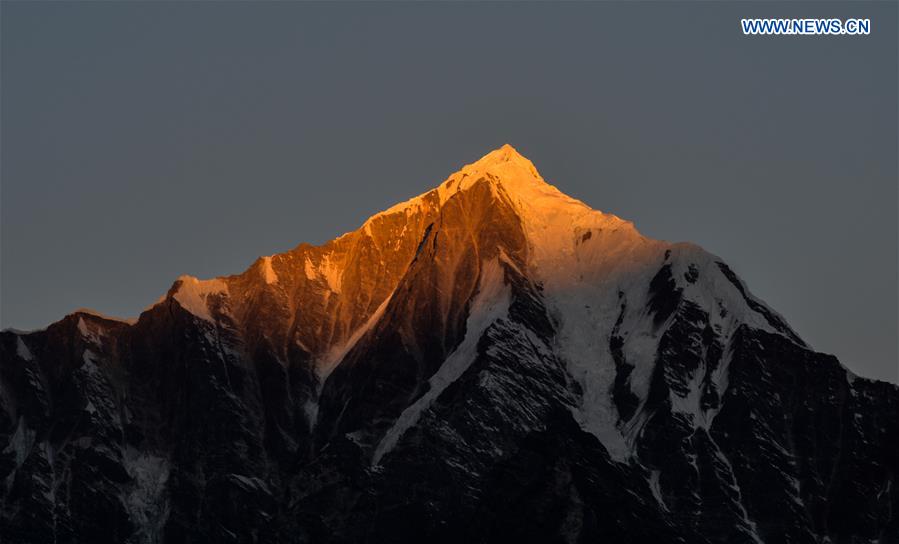10 Misunderstandings about Tibet (Ⅰ)
China's Tibet Autonomous Region's mystery and beauty has attracted visitors throughout the ages, but there has also been a great deal of misunderstandings about Tibet. This article will clear up some of those misunderstandings.

Photo shows an old Tibetan lady holding a prayer wheel. [Photo/travel.sina.com.cn]
Misunderstanding 1: Tibet is not safe to stay.
Reality: Tibet is probably one of the safest places in China. Doors remain unlocked at nighttime because robbery is rare; no one pockets lost property as their own. Most Tibetans believe in Tibetan Buddhism. They are thus friendly, sociable, and not barbarous as some may imagine.

Photo shows the Tibetan woman living on the Qinghai-Tibet Plateau. [Photo/travel.sina.com.cn]
Misunderstanding 2: Most people on the Qinghai-Tibet Plateau turn altiplano red because they are exposed to so much direct sunlight.
Reality: Because of long-term oxygen depletion, people living on the Qinghai-Tibet Plateau often have angiotelectasis, a capillary proliferation and increased contrafluxion. Thus, Tibetans may turn altiplano red (mostly children, women, and fieldworkers).

Photo shows the galsang flower. [Photo/travel.sina.com.cn]
Misunderstanding 3: The galsang flower is coreopsis.
Reality: The galsang flower's name in the Tibetan language is Galsang Medok(meaning 'happy flower' in Chinese). It is a commonly found flower with a thin stem and small petals. For Tibetans, all nameless wildflowers can be called "galsang flower". However, controversy remains over what exactly the galsang flower is. As the city flower of Lhasa, the holy Galsang Medok symbolizes love and auspiciousness.

Photo shows the winter scenery of the Potala Palace. [Photo/China Tibet Online]
Misunderstanding 4: Tibet is very cold in winter.
Reality: When looking at photos of Tibet (especially those that show the mountains covered in snow all the year round), people may take bad weather in Tibet as a given. However, Tibet is not as cold in winter as one might imagine. The atmosphere on the Qinghai-Tibet Plateau is thin, and Tibet gets plenty of sunshine – winter is no exception. In fact, Tibet is much warmer than some northern Chinese cities, with Lhasa maintaining an average temperature between -10℃ and 10℃ in winter. There is, however, more snow in some areas, including Nagchu and Ngari, because of the high altitude. Generally speaking, Tibet is not so cold in winter, but people should pay attention to the large temperature differences between day and night because of the region's unique geographic conditions.

Photo shows the touch-head blessing. [Photo/travel.sina.com.cn]
Misunderstanding 5: It doesn't matter if you touch a Tibetan kid's head.
Reality: If you are not a lama or Rinpoche, then please do not touch a Tibetan's head casually. According to the related cultural customs, Tibetans normally won't touch other kids' head unless they are family members, relatives or close friends, because they consider it a holy action that only lamas and Rinpoches are qualified to do. If someone touches the bare head of a lama or Yogi out of curiosity -- even if they're very close friends --such a behavior is considered offensive to at least some degree. Therefore, shake hands or hold hands, but do not touch their head!
To be continued……
Your Comment
Name E-mailRelated News
-
;
-
-

-
Uncovering the monastic life of young Tibetan rinpoches
11-year-old Tibetan boy Lozang Dorje was recognized as the seventh Dechöe Rinpoche when he was six-years-old.
-
-
-

-
Sunshine casts on snow mountains, SW China's Tibet
Sunshine casts on a snow mountains in Gyirong Township of Gyirong County, southwest China's Tibet Autonomous Region.
-
-
-

-
Gansu steps up protection of Tea Horse Road
Nearly one thousand cultural relics about the North Tea Horse Road were displayed recently at the Tea Horse Road Cultural Museum.
-
-
-

-
Nepalese tourism entrepreneurs propose cross-border tourism in Him
Tourism experts in Nepal have come up with a new proposal of cross-border tourism in the Himalayan region.
-
Based in Lhasa, Tibet Vista is a Tibet travel agency that specialized in Tibet permit, and Tibet tours for both private and group travelers at a local price!
•4 Days Lhasa City Group Tour from USD 460 •8 Days Everest Base Camp Group Tour from USD 850 •15 Days Mt.Kailash Group Tour from USD 1780 •2016 Tibet Train Tours from Beijing, Shanghai, Chengdu, Xining,etc










